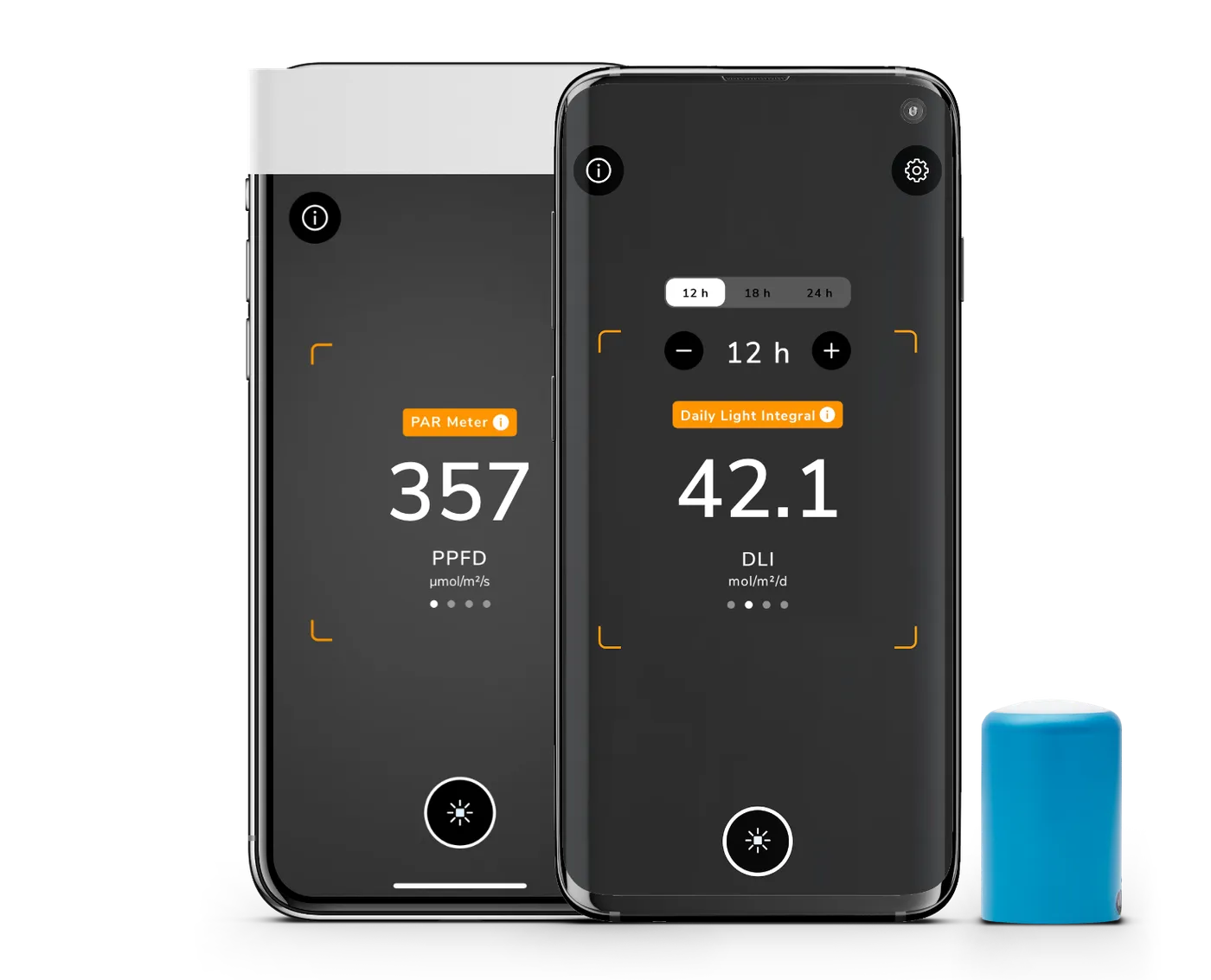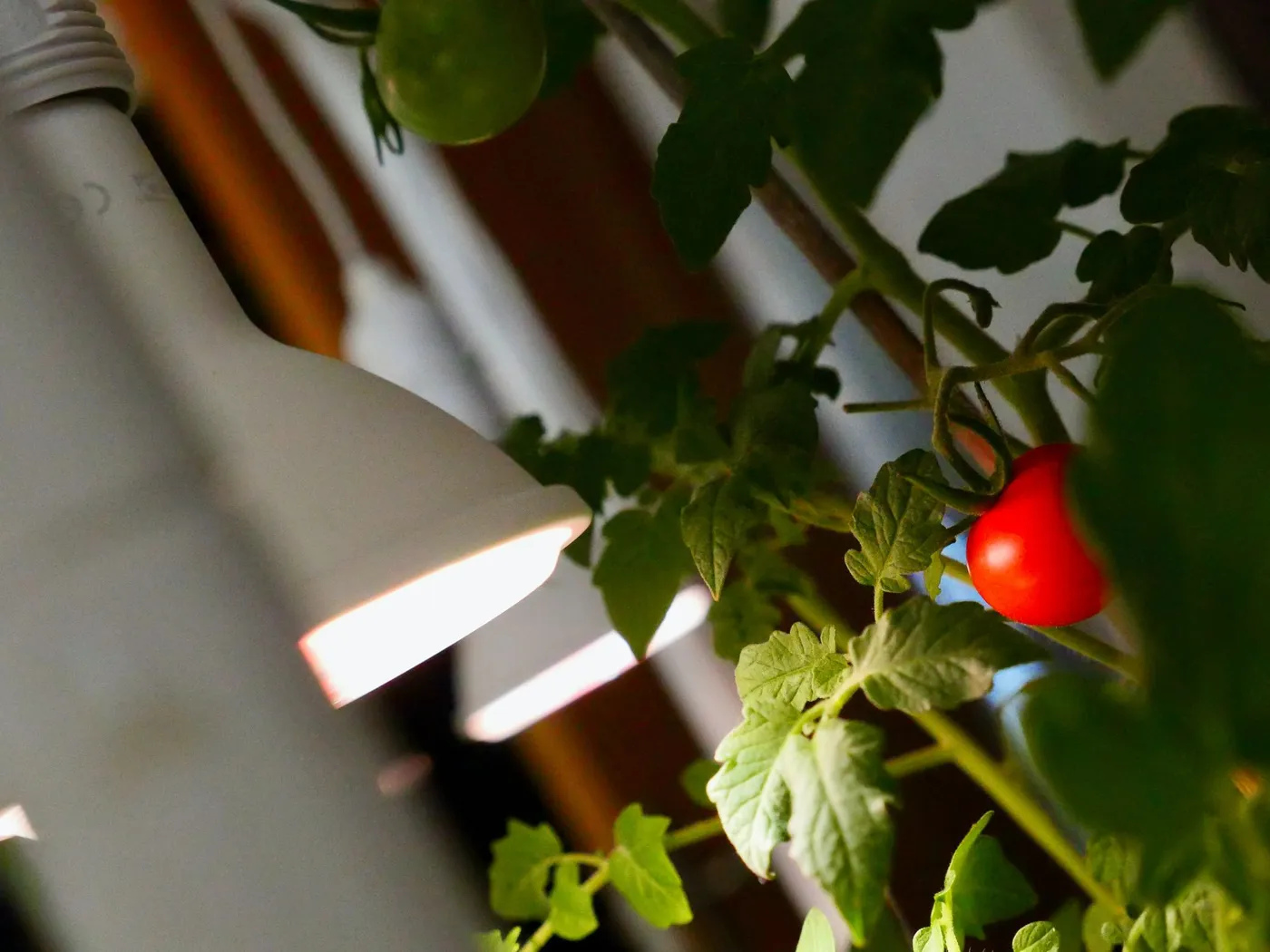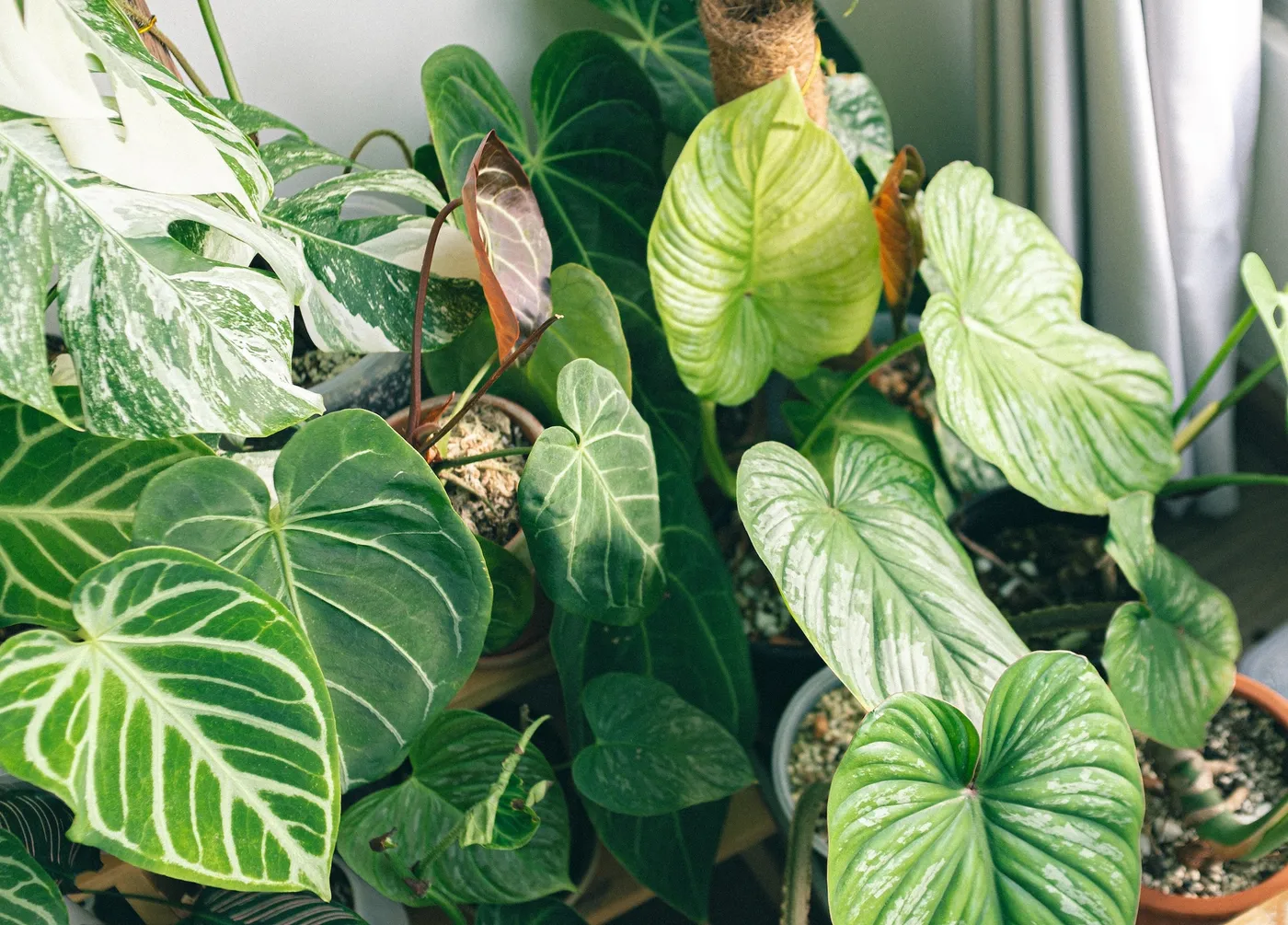
Auto-Translate
In order to grow healthy plants and yield a bountiful harvest, it is crucial to provide your cannabis plants with the proper intensity of light. But just using any light won't do the trick. What you need is the right intensity of photosynthetically active radiation (PAR) at the leaves of your plant to really let them thrive.
Contents
The Daily Light Integral
When it comes to plant lighting, the daily light integral (DLI) is the most important measure and the one metric you want to optimize. Providing too low of a DLI will result in slow plant growth and a low yield whereas providing too high of a DLI will result in wasted electricity and might even burn the plants. That's why we're talking about DLI first in an article about PAR levels and we further assume that you know about DLI in the first place. If you want to learn more, we recommend our full article on DLI for cannabis.
General Recommendations
Identifying the ideal PAR levels is quite complex and dependent on a lot of influencing factors, most notable the plant's genetics, current growth phase, and climate. To simplify things and provide you a recommendation already, we'll dive deeper into those details later on and reveal our recommendation first:
| Growth Phase | PAR Level (PPFD) |
|---|---|
| Seedling / Clone | 100 – 300 |
| Vegetative | 250 – 600 |
| Bloom / Flowering | 500 – 1050 |
Mind that PAR levels are measured as photosynthetic photon flux density (PPFD) generally in the unit of µmol/m²/s. If you want to learn more about different units of light measurement, we recommend our article on exactly that.
Influencing Factors
A plant's photosynthesis and metabolism is quite complex and depends on a lot of factors above and beneath the soil. The following describes the most influental on the light levels.
CO2
Photosynthesis mainly requires photons (light), water, and CO2. Therefore, CO2 is an important and influential factor when considering optimal PAR levels. As for really maxing out the rate of photosynthesis, all plants do have a point where more light just does not equal more growth, but moreoften than not, inadequate CO2 supplementation is the primary limiting factor.
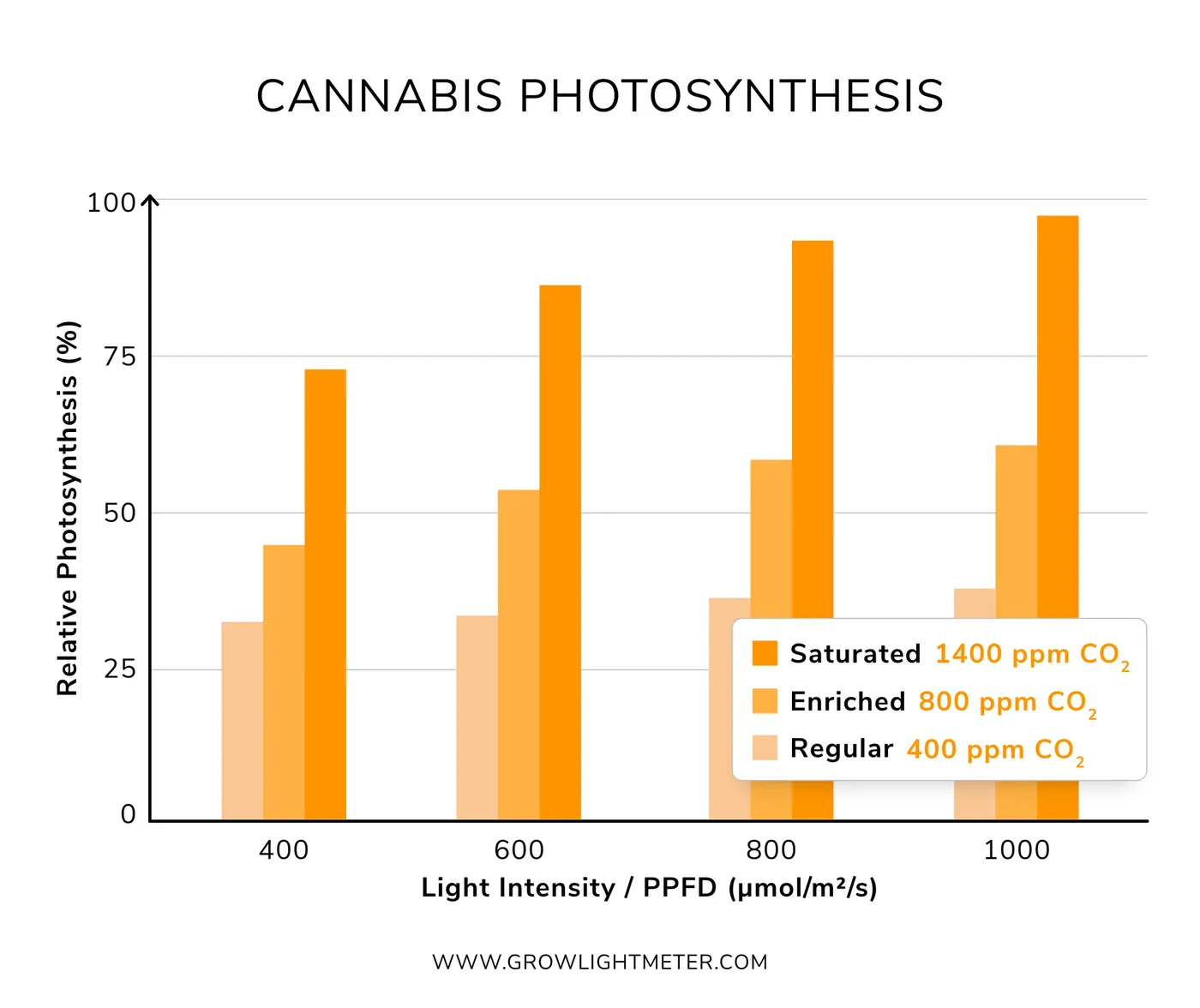
CO2 is measured in parts per million (ppm). General indoor CO2 levels of about 400 to 600 ppm quickly restrict photosynthetic activity to less than half of what would be possible. Supplementing higher CO2 to reach at least 800 ppm greatly boosts photosynthetic activity and allows for higher PAR levels and thus a higher PPFD. If you really want to max out your cannabis plant’s growth, we recommend the following CO2 levels:
| Growth Phase | CO2 Level (ppm) |
|---|---|
| Seedling / Clone | 400 |
| Vegetative | 400 – 800 |
| Bloom / Flowering | 800 – 1400 |
To dig deeper into the topic of adding CO2 to your cannabis grow, we recommend our article on increasing cannabis yields with CO2 covering it in much detail.
Temperature & Humidity
In general, the growth of a cannabis plant increases with temperature until an optimal temperature is reached. Above the optimal temperature, plant growth decreases or even halts. The tricky thing is, that the optimal temperature again depends on the CO2 concentration in the growth environment. We recommend the following temperature levels:
| Growth Phase | Day | Night |
|---|---|---|
| Seedling / Clone | 72 – 80 °F | 70 – 78 °F |
| Vegetative | 74 – 84 °F | 68 – 76 °F |
| Bloom / Flowering | 68 – 84 °F | 68 – 78 °F |
Another factor is humidity whose optimal rate in turn is dependant on the temperature. The following table provides a detailed recommendation from a study on tomatoes that is also applicable to cannabis:
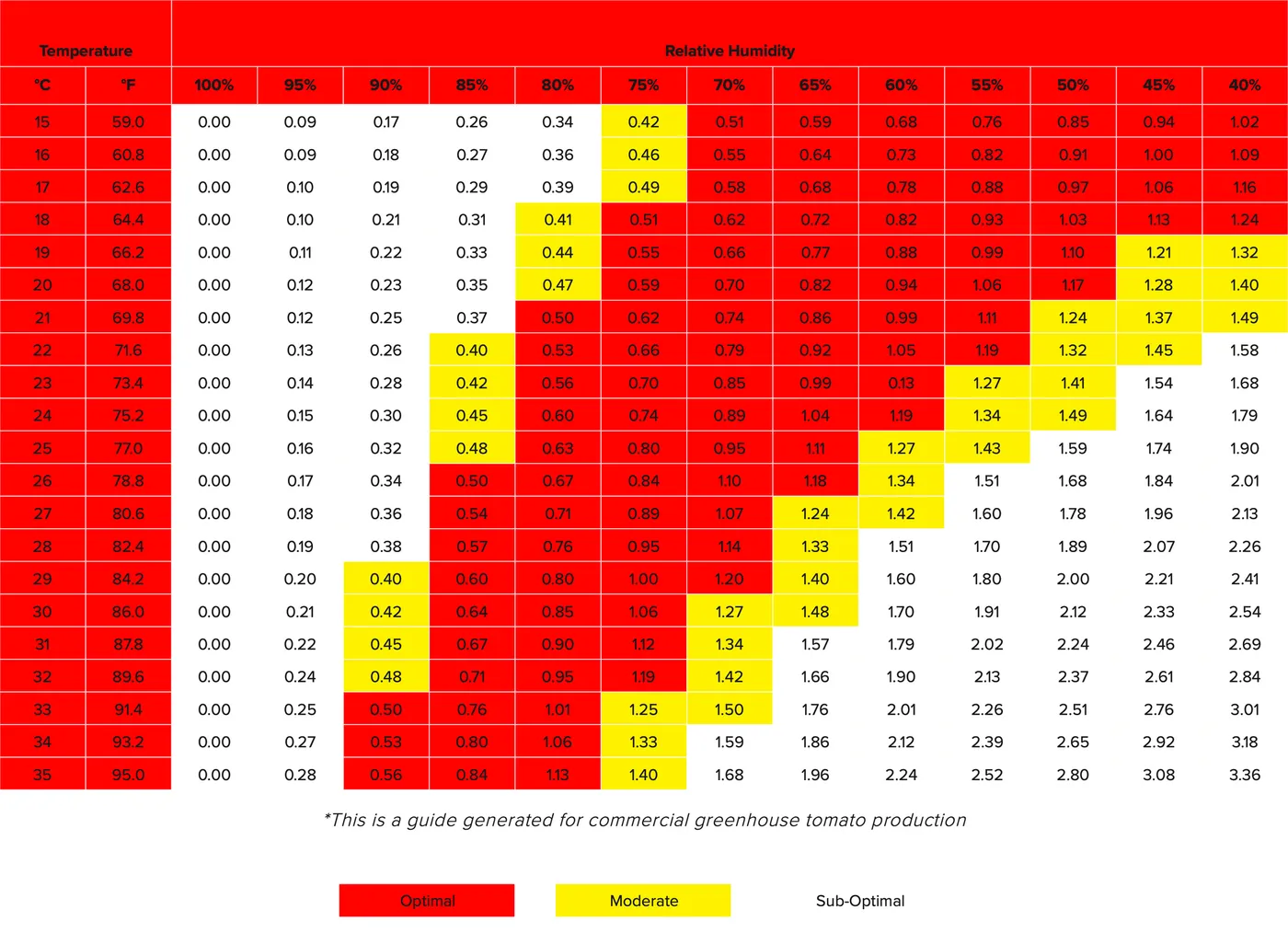
As for the factor of climate, as long as you keep your plants within those recommended temperature and humidity values, you can increase your PAR levels to the upper end of our recommended PPFD values.
Genetics
Cannabis naturally grows in pretty diverse climates stemming from tropical regions to highly mountaineuous areas – each with different light levels. As a highly cultivated and breed plant, there is a lot of genetic variety that is hard to cover in this article. However, most seed manufacturers provide some information about the specific strain's light need that should allow you to get a sense of putting your strain rather on the low- or the high end of our recommendation.
Signs For Too Much Light
Light Burn
Light burn is the most common sign of too high PAR levels on a cannabis plant. It is also commonly referred to as leaf burn and causes yellow leaves with green veins and stems.
Light burn might easily be mistaken with a Nitrogen deficiency, which also turns the leaves yellow. A simple indicator is how strong the yellow leaves are attached to the stem: While Nitrogen-deficient leaves fall off on their own, light-burned leaves are hard to pluck off. Furthermore, light burn is mainly affecting the leaves on the top of the plant while a Nitrogen deficiency starts at the bottom of the plant.
Loose And Airy Buds
An excess of light also causes the plant's metabolism to work harder which often causes nutrient deficiencies and generally weak, loose, and airy buds that might even feel crisp.
Light-bleached "White" Buds
Bud bleaching can happen when the buds itself get too much light and causes them to loose their color pigments and turn white. This must not be mistaken by a very resinous, trichome covered bud. Bleached buds are often less potent and might even lose allmost all of the cannabinoids.
Signs For Too Little Light
Slow Growth
The most obvious factor is slower than expected growth. As light is one of the key ingredients for plants to photosynthesize, with too little light, they just can't grow as desired. To identify slow growth, it might be helpful to compare the height of your plants to the regular height of the same strain at the same age.
Stretching
When in a lack of light, most plants respond to this by spurring stem growth to move themselves closer to the light. This can be detected visually by higher internode spacing and an overall taller look of the plant.
Measuring Light
If you're like us — you want to optimize the PAR levels for your cannabis plants for the best results in both plant growth and electricity consumption.
However, as you already know, they are expensive. But there is an easier, cost-effective, and readily available solution: Our PAR meter app. Our app allows you to accurately measure PAR in PPFD without any external sensor by utilizing the smartphone's camera. We use lab-grade equipment for our development and testing. We can confidently state that our app is achieving best-in-class accuracy at your fingertips.
If you're ready to fine-tune your grow room to push your crop beyond the limit — download the grow light meter app and make guesswork a thing of the past.
Sources
- Photosynthetic response of Cannabis sativa L. to variations in photosynthetic photon flux densities, temperature and CO2 conditions
- What to Know About Lighting Cannabis from a Former Greenhouse Cultivator
- The Effect of Light Spectrum on the Morphology and Cannabinoid Content of Cannabis sativa L.
- Light Burn or Light Stress
- Fluence Photobiology Guide

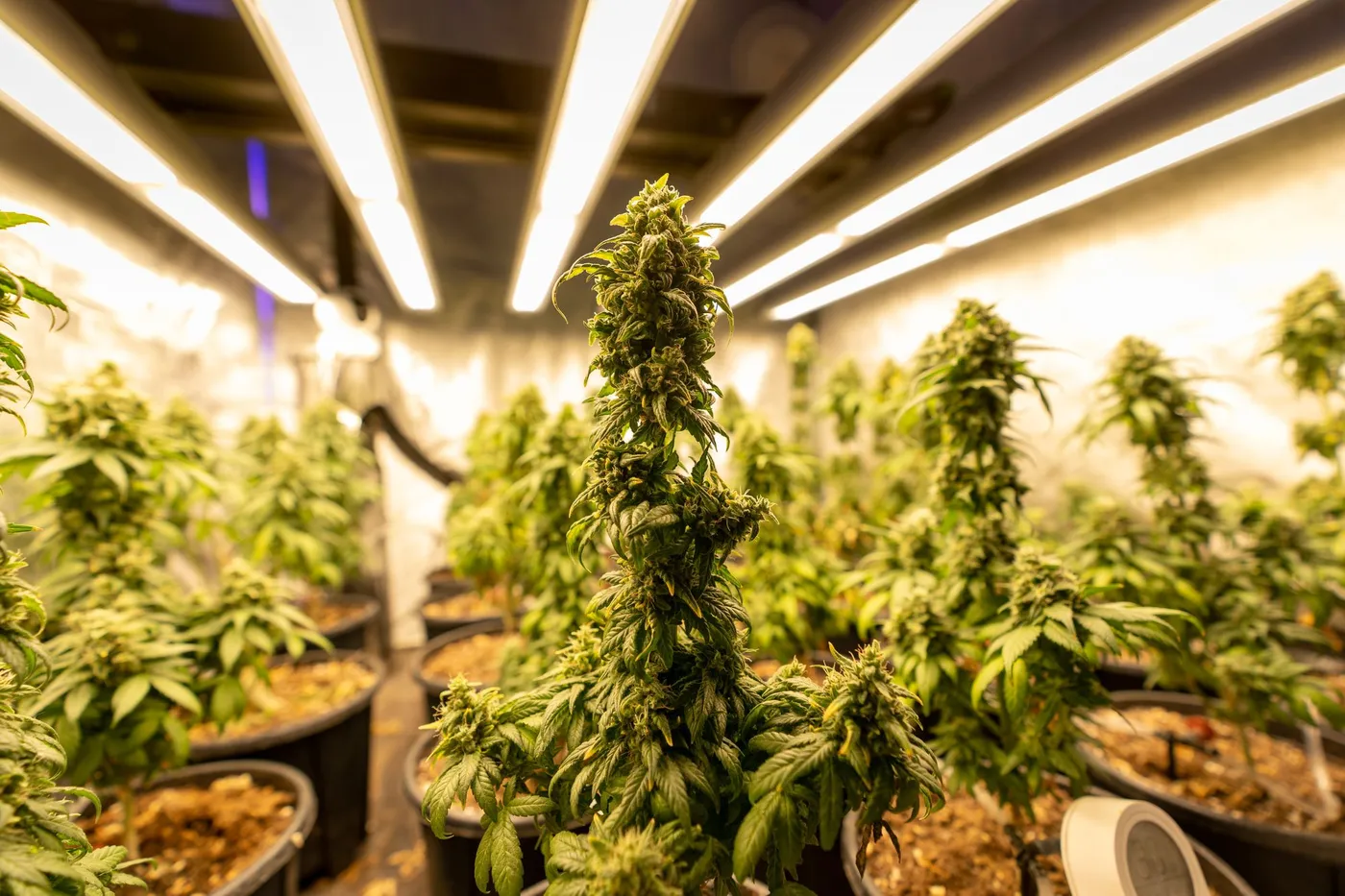
 Share This
Share This



